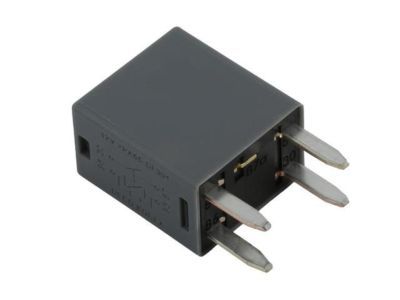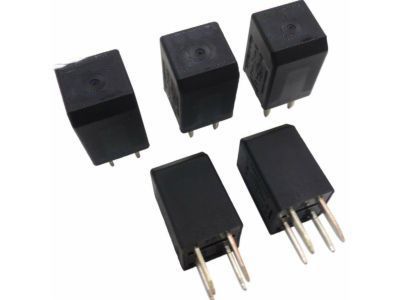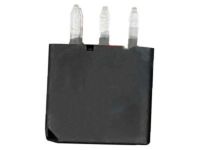My Garage
My Account
Cart
Genuine Buick Enclave Relay
Wire Relay- Select Vehicle by Model
- Select Vehicle by VIN
Select Vehicle by Model
orMake
Model
Year
Select Vehicle by VIN
For the most accurate results, select vehicle by your VIN (Vehicle Identification Number).
11 Relays found
Buick Enclave RELAY ASM,ACSRY TIME DELAY CUTOFF *GRAY
Part Number: 13500114$9.54 MSRP: $20.04You Save: $10.50 (53%)Ships in 1-2 Business DaysBuick Enclave Relay Asm,Multiuse *Gray
Part Number: 13503102$7.27 MSRP: $16.22You Save: $8.95 (56%)Ships in 1-2 Business DaysBuick Enclave RELAY ASM,FAN CONT
Part Number: 13503103$4.82 MSRP: $10.77You Save: $5.95 (56%)Ships in 1-2 Business DaysBuick Enclave Relay
Part Number: 13500113$7.74 MSRP: $14.60You Save: $6.86 (47%)Ships in 1-2 Business DaysBuick Enclave RELAY ASM,WSW MOT *BLACK
Part Number: 13500126$11.71 MSRP: $21.00You Save: $9.29 (45%)Ships in 1-3 Business DaysBuick Enclave Relay
Part Number: 13468934$7.55 MSRP: $14.24You Save: $6.69 (47%)Ships in 1-2 Business DaysBuick Enclave Relay
Part Number: 13455283$19.84 MSRP: $36.08You Save: $16.24 (46%)Ships in 1-2 Business DaysBuick Enclave RELAY
Part Number: 13468935$5.67 MSRP: $10.70You Save: $5.03 (48%)Ships in 1-2 Business DaysBuick Enclave Relay
Part Number: 13509878$36.57 MSRP: $69.00You Save: $32.43 (47%)Ships in 1-2 Business DaysBuick Enclave Relay,Vacuum Pump
Part Number: 84129871$16.78 MSRP: $31.66You Save: $14.88 (47%)Ships in 1-2 Business DaysBuick Enclave Relay Assembly, Fog Lp
Part Number: 84310952$22.24 MSRP: $39.90You Save: $17.66 (45%)Ships in 1-3 Business Days
Buick Enclave Relay
Each OEM Buick Enclave Relay we offer is competitively priced and comes with the assurance of the manufacturer's warranty for the part. Furthermore, we guarantee the speedy delivery of your orders right to your doorstep. Our hassle-free return policy is also in place for your peace of mind.
Buick Enclave Relay Parts Questions & Experts Answers
- Q: How to Test and Troubleshoot Relays on Buick Enclave?A: In the vehicle, various electrical accessories such as the fuel injection system, Horns, starter, and fog lamps utilize relays to transmit electrical signals to their respective components. Relays work by using a low-current control circuit to open and close a high-current power circuit, enabling the proper operation of these components. Most relays can be found in the engine compartment and interior fuse/relay boxes. If a faulty relay is suspected, it can be tested using the following procedure or taken to a dealer service department or repair shop for evaluation. The relays used in these vehicles are typically ISO relays, adhering to International Standards Organization standards. They have numbered terminals indicating their circuit connections and functions. Two of the relay terminals are for the control circuit, connecting to the relay coil, while the other terminals serve as the power circuit. When energized, the relay's coil creates a magnetic field that closes the larger contacts of the power circuit, providing power to the circuit loads. Terminal 85 and 86 are usually the control circuit, with terminal 86 connected to battery positive (B+) voltage and terminal 85 to ground in relays with diode terminals. If the relay contains a resistor, terminals 85 and 86 can be connected in either direction with respect to B+ and ground. Terminal 30 is typically connected to the battery voltage source (B+) for the circuit loads, and terminal 87 is connected to the ground side of the circuit, either directly or through a load. Relays may have additional terminals, such as 87A, 87B, 87C, etc., for alternate load or ground connections. To test the relay, use an ohmmeter to check continuity through the relay control coil and ensure resistance matches the expected value. If the relay fails the tests or shows infinite resistance, it should be replaced. Additionally, when testing the relay's power circuit terminals, there should be no continuity between terminals 30 and 87 with the relay de-energized, but there should be continuity when the relay is energized using jumper wires. If any of the tests indicate a failure, the relay should be replaced.




















